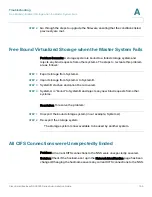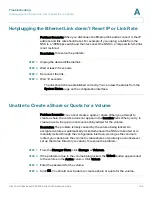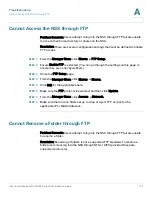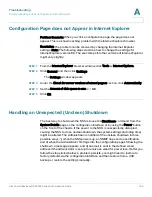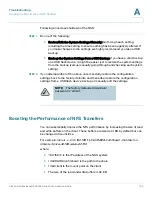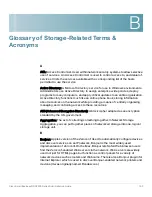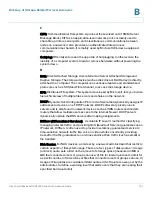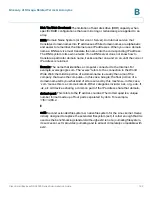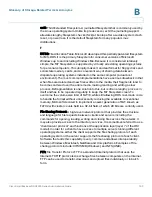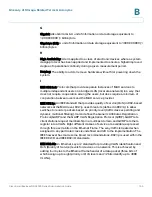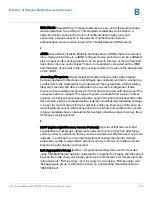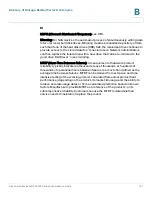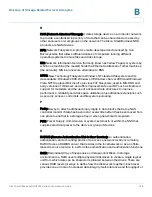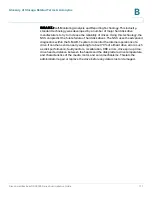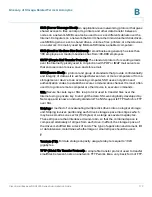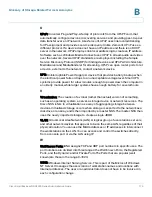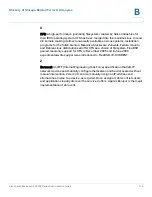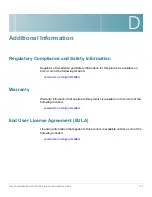
Glossary of Storage-Related Terms & Acronyms
Cisco Small Business NSS2000 Series Administration Guide
168
B
N
NAS (Network Attached Storage): A data storage device on a computer network
to provide a centralized repository of data that can be shared and accessed by
other end-users or workgroups on the network. The Cisco Small Business NSS
products are NAS devices.
NFS: Network Filesystem. A protocol suite developed and licensed by Sun
Microsystems that allows different makes of computers running different
operating systems to share files and disk storage.
NIS: Network Information Service (formerly known as Yellow Pages). A system by
which one machine (the master) holds the Ethernet addresses of other machines
(the servants). NIS is an insecure alternative to DNS.
NTFS: New Technology Filesystem. Windows NT standard filesystem and its
descendants: Windows 2000, Windows XP, Windows Server 2003 and Windows
Vista. NTFS replaced Microsoft’s previous FAT filesystem, used in MS-DOS and
early versions of Windows, and offers improvements over FAT such as improved
support for metadata and the use of advanced data structures to improve
performance, reliability and disk space utilization plus additional extensions such
as security access control lists and filesystem journaling.
P
Parity: A way to attach additional binary digits to data blocks that lets a NAS
controller monitor if data has been lost or overwritten after it has been moved from
one place to another in a storage array or among networked computers.
PSU: Power Supply Unit. A device or system external to or within the NSS that
supplies electrical power to the device or group of devices.
R
RADIUS (Remote Authentication Dial-in User Service): An authentication,
authorization, and accounting protocol to access a network locally or remotely.
RADIUS uses a RADIUS server that resides in the local network or as an offsite,
leased resource/service to perform the authentication and authorization functions.
RAID: Redundant Array of Inexpensive or Independent Disks. In storage
environments, a RAID uses multiple physical disk drives to create a single logical
unit from which data can be shared or replicated between the drives. There are
various RAID levels (or ways to define how the disks work together). Each level
provides one or more of increased data integrity, fault-tolerance, and throughput or


